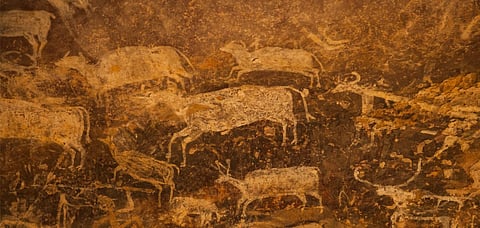
- Destinations
- Experiences
- Stay
- What's new
- Editor’s Picks
- Responsible Tourism
- CampaignsCampaigns
- Subscribe

The rock shelters of Bhimbetka in Madhya Pradesh, about 40km by road from state capital Bhopal, is a must on the itinerary of nearly every traveller to the region. Located in the foothills of the Vindhya Mountains, the rock shelters contain paintings which date &lsquofrom the Mesolithic Period right through to the historical period&rsquo, according to the UNESCO citation. In 2003, it was declared a World Heritage Site.
The site is once again in the news following an article published in the Gondwana Research, the official journal of the International Association for Gondwana Research. According to the published article (authored by Gregory J Retallack, Neffra A Matthews, Sharad Master, Ranjit G Khangar and Merajuddin Khan), seen on the roof of what is often referred to as the Auditorium Cave, is an imprint of an over 500 million year old fossil called Dickinsonia.
Wikipedia defines it as &lsquoDickinson is an extinct genus of basal animal that lived during the late Ediacaran period in what is now Australia, Russia and Ukraine&rsquo (read more about it here).
According to researchers, it is one of the links in the evolution of life, linking the explosion of life to the simple organisms which existed before that.
According to media reports, the discovery was made by a group of geologists who were visiting Bhimbetka (as part of the 36thInternational Geological Congress, which was later cancelled due to the pandemic) in March last year. They took photographs and later studied it through 3D image based models.
If the discovery is confirmed, it will make India home to one of the oldest animal fossils in the world.
